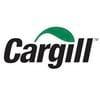Associations between ascaris suum infections and different farm management practices
Published: June 18, 2025
Source : R. Del Pozo Sacristán 1,*, J. Beek 1, H. Segers 1, S. Agten 2, S. Van Gorp 1 / 1 MSD Animal Health, Brussels, Belgium; 2 MSD Animal Health, Boxmeer, Netherlands.
Summary
Keywords: Ascaris suum, management, Serasca test
Introduction:
Ascaris suum infections remain an important threat to the pig industry. A number of studies have been done in the last years regarding diagnosis, treatment and control. The aim of this study was to investigate the prevalence of A. suum in Belgium and to identify associations with farm management practices.
Materials and Methods:
Between January 2013 and December 2015, 162 commercial pig herds in Belgium were randomly selected and included in the study. From each herd, 10 blood samples were taken randomly from fatteners (older than 22 weeks of age). Blood samples were analyzed using Serasca® test. The OD value obtained from each animal was used to calculate the average OD value of the herd. The cutoff of the test was defined as cutoff to differentiate between positive (OD≥0.500) and negative (OD< 0.500) herds. The prevalence of positive herds was calculated. In addition to the serology investigation, an anamnesis was recorded for each herd, including parameters such as type and herd size, average daily gain (ADG), as well as management factors which were considered important in the control of A. suum infections [production system, weaning age, presence of slatted floors, deworming strategy of fatteners and sows (number of treatments, product, route)]. A Pearson Chi-Square was performed for prevalence of positive herds vs type and herd size. A Pearson correlation was performed for average OD value vs all the parameters.
Results:
In total, 47% of pig herds were positive of which 54% were farrow-to-finish herds and 36% fattening herds (P< 0.05). The prevalence also varied according to the size of the farrow-to-finish herds: 57%, 31% and 64% of the herds with 0-249, 250-349 and > 350 sows, respectively, were positive (P< 0.05). Higher OD values were negatively associated (P< 0.05) with the number of sows (herd size) (r=-0.230) and ADG of fatteners (r=-0.189). Lower OD values were positively associated (P< 0.05) with the presence of slatted floors (r=0.225), presence of deworming strategy in fatteners (r=0.181), number of deworming treatments in fatteners (r=0.154) and use of ovicidal, larvicidal and wormicidal products (r=0.207). No other associations were found between the rest of parameters and average OD value.
Conclusion:
This study revealed a high prevalence of herds infected with A. suum in Belgium, especially in farrow-to-finish herds when compared to fattening herds. An association between high infection level and lower growth was also observed. The herd size (< 250 and > 350 sows) combined with the absence of slatted floor and lack of effective deworming strategies were associated with a high A. suum infection level.
Disclosure of Interest: None Declared.
Published in the proceedings of the International Pig Veterinary Society Congress – IPVS2016. For information on the event, past and future editions, check out https://www.theipvs.com/future-congresses/.
Content from the event:
Related topics:
Mentioned in this news release:
MSD - Merck Animal Health
Recommend
Comment
Share

Would you like to discuss another topic? Create a new post to engage with experts in the community.











